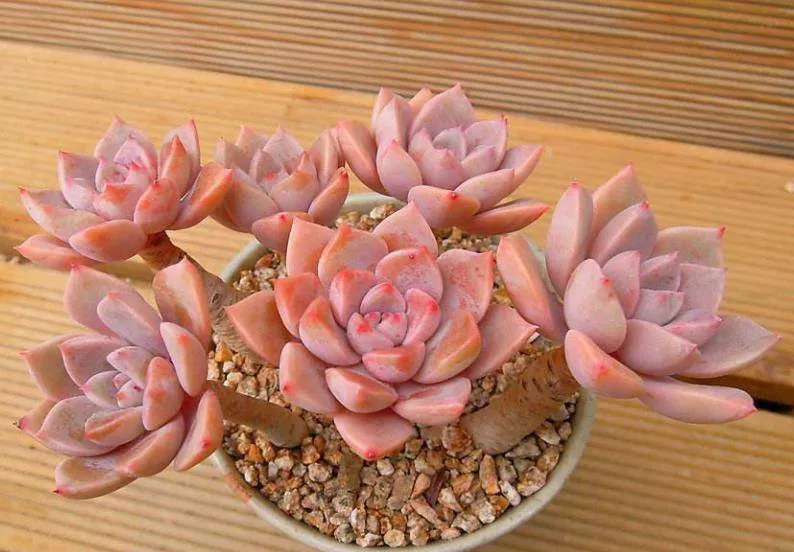Succulents have surged in popularity as indoor and outdoor plants, celebrated for their captivating shapes, vibrant colors, and low-maintenance nature. Whether you’re a seasoned succulent enthusiast or just starting your succulent journey, one crucial factor to consider is the depth of the pots you choose. The depth of succulent pots plays a significant role in the health and overall well-being of your succulents. In this comprehensive guide, we will explore the ideal pot depths for different types of succulents and delve into pot materials, drainage, and root development.
The Importance of Pot Depth
The depth of a succulent pot is vital because it directly impacts the growth and health of your plants. Choosing the wrong pot depth can lead to issues like root rot, stunted growth, and overcrowding. Understanding the specific needs of your succulents is key to selecting the appropriate pot depth.
Factors Influencing Pot Depth
Several factors come into play when determining the ideal pot depth for your succulents:
1. Succulent Variety
Different succulent varieties have varying root systems and growth patterns. Some have shallow roots, while others develop deep root systems. Understanding your succulent’s specific requirements is crucial. Here are some examples:
Shallow-Rooted Succulents: Species like Echeveria and Sedum generally have shallow root systems. For these succulents, pots with a depth of 2 to 4 inches are suitable.
Deep-Rooted Succulents: Succulents like Agave and Aloe develop deeper root systems. Pots with a depth of 6 to 12 inches are recommended for these plants.
2. Watering Frequency
Consider your watering habits. Succulents are known for their drought-resistant qualities, but overwatering can still be detrimental. Deeper pots retain more moisture, so if you tend to water generously, opt for shallower containers to prevent waterlogged soil.
3. Soil Composition
The type of soil you use also affects the pot depth. Well-draining soil is essential for succulents to prevent water from pooling around the roots. In deeper pots, the soil has a greater depth to drain through, reducing the risk of water accumulation.
Ideal Pot Depth by Succulent Type
To make it easier to choose the right pot depth for your succulents, let’s categorize them based on their root systems:
1. Shallow-Rooted Succulents (2 to 4 inches deep pots)
Echeveria
Sedum
Graptopetalum
Crassula
2. Moderate-Rooted Succulents (4 to 6 inches deep pots)
Haworthia
Kalanchoe
Gasteria
3. Deep-Rooted Succulents (6 to 12 inches deep pots)
Agave
Aloe
Yucca
Dudleya
Pot Materials and Drainage
Pot materials are also important considerations when growing succulents. Clay and terracotta pots are popular choices because they are porous and allow excess moisture to evaporate from the soil. However, they may require more frequent watering due to their breathability. Plastic pots, on the other hand, retain moisture better but can lead to overwatering if not carefully managed.
No matter the material, proper drainage is essential. Ensure your pots have drainage holes to prevent water from pooling at the bottom. Using a well-draining succulent mix is equally important, as it aids in maintaining the right moisture levels around the roots.
Root Development and Repotting
Understanding how succulents develop their root systems can help you anticipate when repotting is necessary. Succulents typically produce more roots in response to their environment. When roots outgrow the pot or become crowded, it’s time to repot your succulent into a larger container with an appropriate depth.
When repotting, gently remove the plant from its current pot, inspect the roots, and trim any damaged or overly long ones. Then, choose a new pot with the right depth, ensuring there’s enough room for root expansion.
FAQs
1. Can I use a deep pot for shallow-rooted succulents?
While it’s not ideal, you can use a deeper pot for shallow-rooted succulents, but it’s crucial to adjust your watering routine to prevent overwatering.
2. Do succulents need a deeper pot as they grow?
Succulents generally benefit from being placed in appropriately sized pots from the start. However, if your succulent has outgrown its pot or its roots are becoming crowded, it’s time to repot into a larger, deeper container.
3. Can I use containers without drainage holes?
Using containers without drainage holes can be risky, as it increases the likelihood of root rot and overwatering. It’s best to choose pots with proper drainage to ensure the health of your succulents.
Conclusion
The depth of succulent pots is a critical factor in their overall well-being. By considering the type of succulent, your watering habits, and the materials used, you can create the optimal environment for your plants to thrive. Remember that repotting when necessary is an essential part of succulent care, ensuring that your succulents continue to flourish in the long run. With the right pot depth and proper care, you can enjoy healthy, vibrant succulents in your home or garden for years to come.


